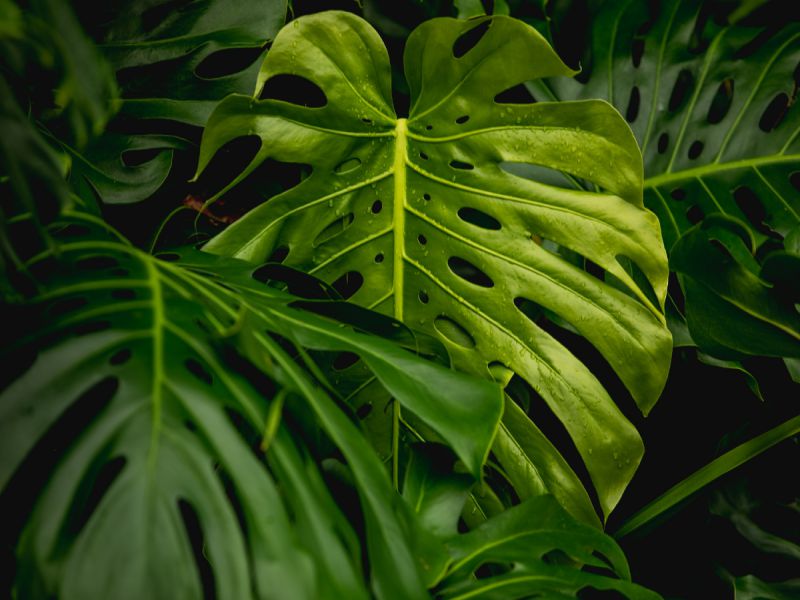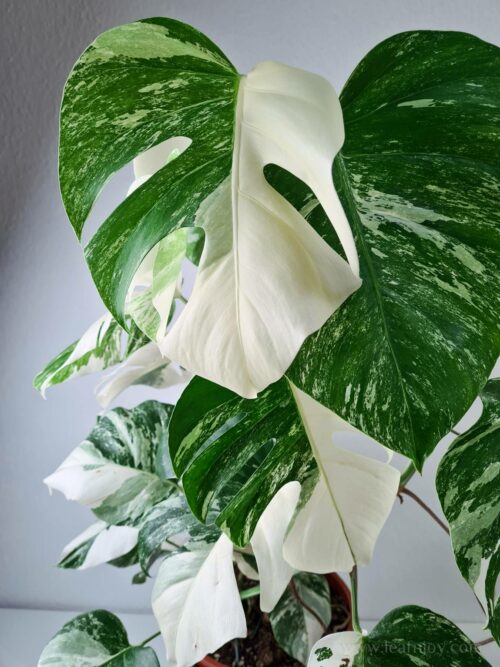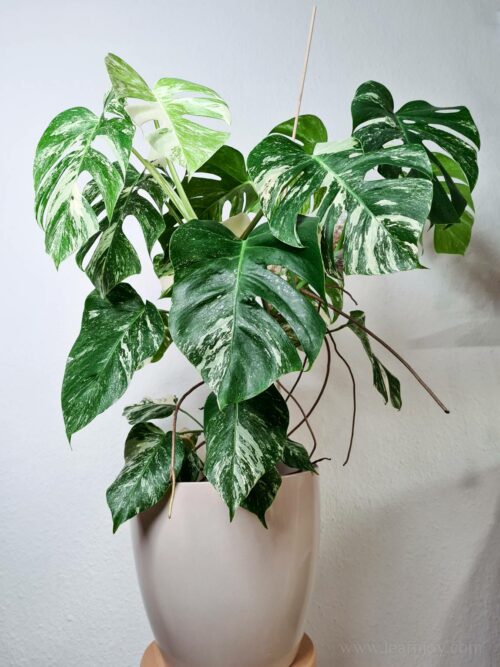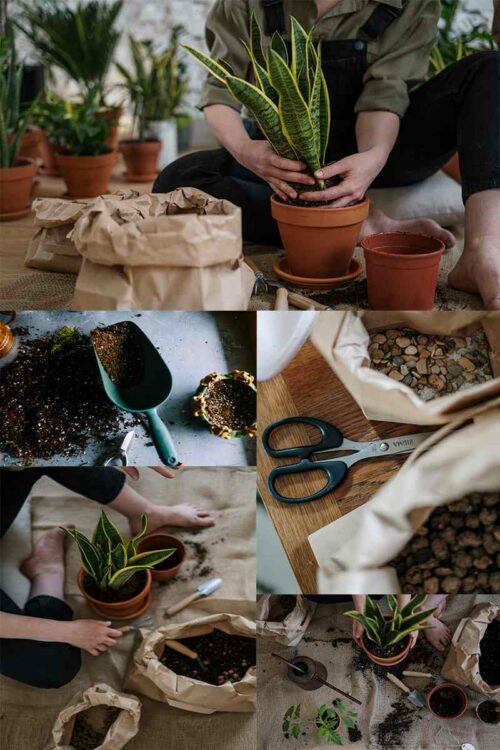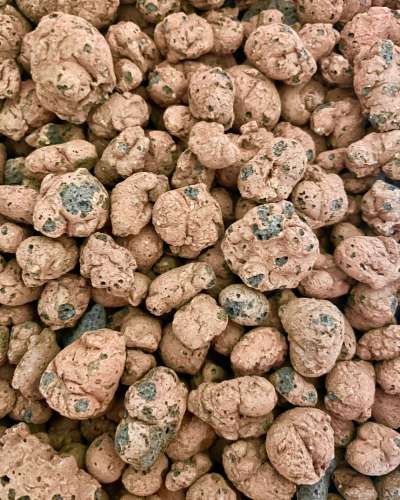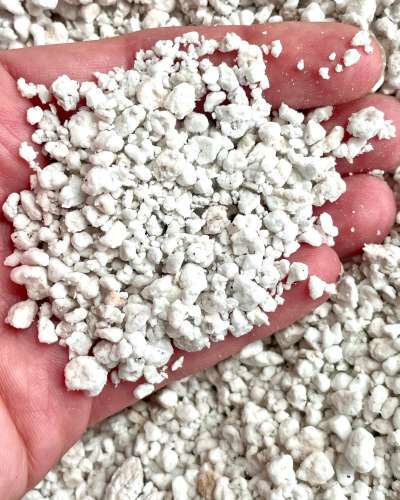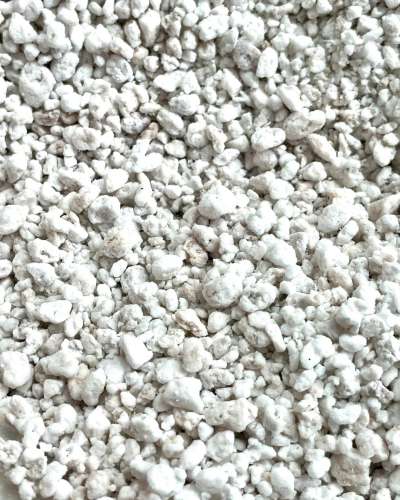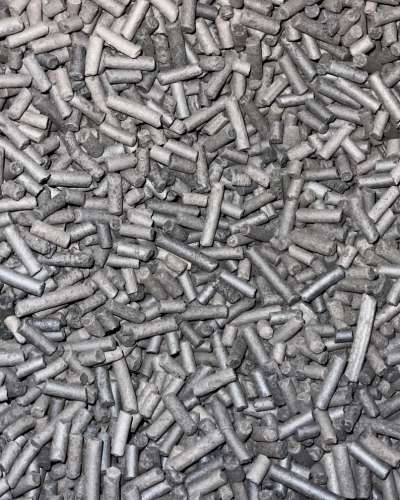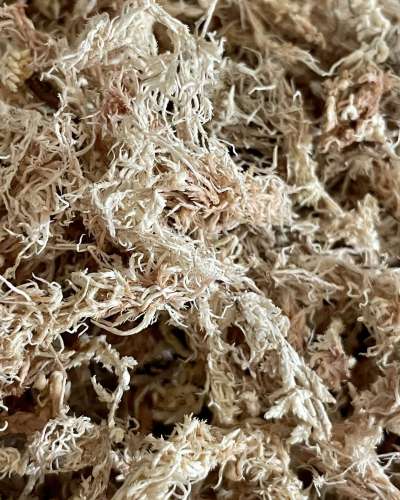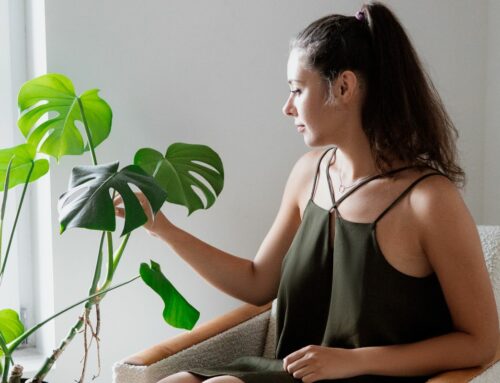How to increase the fenestration in a Monstera? Why are the leaves of my Monstera Deliciosa not splitting? Why is my Monstera’s fenestration reverting? How to encourage Monstera Deliciosa to produce leaves with more and larger holes?
If your Monstera suddenly refuses to produce fenestrated leaves that you were so hoping to see or starts losing its fenestration, the above questions are probably on your mind. Monstera are easy and beginner-friendly houseplants, but sometimes a common growing issue is evident: lack or loss of fenestration. This article is all about increasing and encouraging the fenestration in Monstera plants.
This post may contain affiliate links. Read our Privacy Policy and Disclosure here.
Whether you have a Monstera Deliciosa, Monstera Adansonii, Laniata, Epipremnoides (Esqueleto), or Monstera Obliqua, let’s be honest, if you are like us, you probably got your plant for its looks, and in particular: the majestic fenestration patterns.
Aaaand… bummer. Your Monstera’s leaves aren’t splitting. Oh-gosh-no.
So what if your Monstera is growing new leaves that are less fenestrated and/or smaller than the previous ones? What factors affect the fenestration in a Monstera Deliciosa and is there anything you could do to influence it? Absolutely! There are a couple of things that you can do to encourage your Monstera to produce larger and more fenestrated leaves. And in this article, we will explain exactly how you can positively influence the fenestration of your Monstera, as well as your plant’s overall well-being.
The plant care tips and tricks in this article are exactly what you need to know if you want to encourage your Monstera to produce leaves with more holes and stunning fenestration. It’s like pressing a magical button that will eventually trigger your Monstera to produce larger and more fenestrated leaves. So if you’re into witnessing the full glory of your tropical plant, continue reading.
Monstera are flowering plant species from the family Araceae, commonly referred to as aroid plants. These tropical plants are native to the rainforests of Mexico, Central America, and northern South America. Monstera Deliciosa and other Monstera plant varieties are popular houseplants due to their beauty and easy plant care routine. These exotic plants stun any plant-lover with their gorgeous dark green leaves that have a unique characteristic to them: the so-called fenestration (holes in the leaves).
Did you know that Monstera Deliciosa is also (albeit wrongly) called Split Leaf Philodendron? This is wrong because: Philodendron and Monstera are two plant species. And Monstera Adansonii is also known as the Swiss Cheese Plant. Guess why? It’s all about the holes.
Generally, a Monstera needs to reach a certain “age” before it starts producing fenestrated leaves, and usually, as the plant matures, the fenestration levels and the size of the newest leaves increase.
Note: Monstera Adansonii actually is happily and readily producing fenestrated leaves from the get-go. Monstera Deliciosa, however, seems to be one playing ‘hard to get’ when it comes to splitting its leaves.
Before discussing what are the conditions that affect whether a Monstera produces fenestrated leaves or not, let’s first look at what is fenestration and why the plants from the Monstera genus produce holes in their leaves.
Psst, do you have a Monstera at home and are wondering what are the best houseplant care tips so that your tropical aroid plant can grow lush and healthy? Then make sure to check out our very detailed Monstera Plant Care Guide.
What is Fenestration?
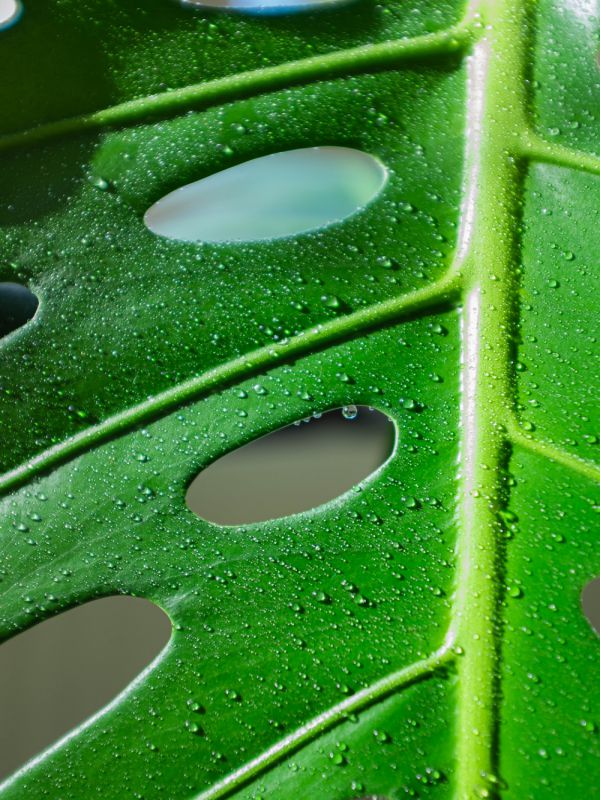
Fenestration means an arrangement of holes or openings on a given surface, in our case, the surface is the leaves of a Monstera. Fenestration refers to Monstera’s leaves splitting at a certain point.
The name “Monstera” comes from the Latin word ‘Monstrum’, which describes both the size of these plants and their unique foliage. The leaves of the Monstera genus develop natural holes as they mature. The fenestration is an important part of the maturing of the plant.
Why Monstera’s leaves split?
The reasons behind Monstera Deliciosa’s fenestrations are a mystery, or at least, there is no one-agreed upon conclusion among researchers.
Most Monsteras grow as semi-epiphytes (meaning, on the surface of another plant). As they climb onto trees towards the light, the holes forming on the newer leaves allow light to also reach the older ones. Some species even have larger holes than remaining leaf tissue (for example, the Monstera Obliqua). So in other words, fenestration is a vital mechanism of a Monstera to allow light distribution across its entire foliage.
There are also other theories present as to why fenestration happens, for instance: to allow water to reach the bottom roots of the plant; to allow better plant thermoregulation; to allow for heavier winds to pass by without damaging the leaves.
Also: big leaves without holes + water = heavyweight and staying water on each leaf (results in an increased disease potential).
Factors Affecting Monstera’s Leaves Splitting (Fenestration)
Are you worried that the leaves of your Monstera Deliciosa aren’t splitting? Multiple factors might prevent your Monstera from producing fenestrated leaves but in most cases: it is a general issue of your Monstera’s care needs not being met. If you aren’t sure what are the ideal conditions to grow a Monstera Deliciosa indoors, make sure to check our very detailed Monstera Houseplant Care Guide.
Apart from staying on top of your Monstera’s general care needs, here are the main issues that might influence the fenestration level of your Monstera, and our suggestions, on how you can correct them and encourage your Monstera to produce more fenestrated leaves, i.e. leaves with more splits.
Your Monstera needs to be old enough to show fenestration (split leaves)
When do Monstera plants start to split their leaves?
I.e. when can you expect to see fenestration in the leaves of your Monstera, especially, Monstera Deliciosa?

If you bought a young Monstera plant from a nursery, perhaps, you are now wondering when will it be mature enough for its leaves to start splitting.
Typically, a Monstera would need to be around two to three years old before it starts producing fenestrated leaves. Young Monsteras have a leaf shape that resembles a heart, quite similar to the shape of the leaves of the Golden Pothos (Epipremnum Aureum), only larger. So if your Monstera is still a young plant, you might have to wait a bit for its first fenestrated leaf.
Monstera plants, that have been grown from a single leaf cutting that was part of a more mature plant, however, can start showing fenestration much earlier on: from about 8 months onwards after the cutting has developed a good root system.
Tip: If you have recently purchased a Monstera Deliciosa, for example, and it already has fenestration, you should expect to see more fenestration in the upcoming leaves. In an ideal situation, the very next leaf should always be a bit bigger and/or show a little more advanced fenestration than the previous leaf.
So can Monstera’s leaves start splitting after opening up? I.e. can your Monstera’s new leaf develop more holes once it has unfurled? Fenestration happens while the leaf is still in development. This means that, once the leaf starts growing from the stem, there will be no more fenestration forming. In other words, you can only influence the new growth of the plant and not the already existing leaves, as they would not split after they have unfurled.
Monstera’s Leaves Might Not Be Splitting Due to Not Enough Light
Honestly, light is such a huge factor when it comes to encouraging Monstera leaves to split. Most often than not, a Monstera might not produce leaves with holes or might decrease its fenestration level, because it is not receiving sufficient light. Note, that your Monstera might be receiving still enough light to grow and produce new leaves, but the light that the plant is getting might not be enough to encourage fenestration or the formation of bigger leaves. In other words, if your Monstera has suddenly started producing smaller and less fenestrated leaves, the first thing that you should consider is its location when it comes to light.
The Fix: Provide your Monstera with bright, indirect natural light
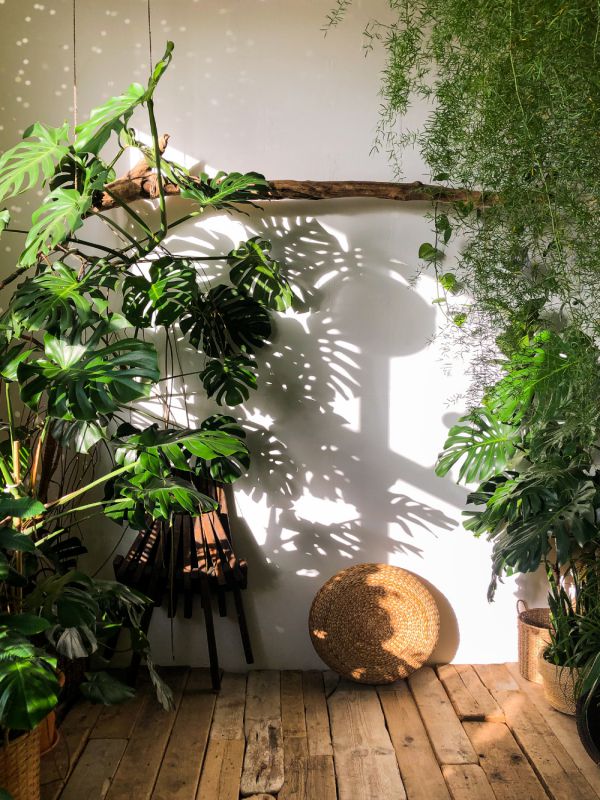
If you want to encourage your Monstera’s leaves to split, provide your houseplant with more light. As simple as that.
So what natural light would be best for your Monstera to encourage growth and fenestration?
As tropical plants, Monstera would thrive in a location that is receiving (towards) indirect bright light. Moving your Monstera closer to the nearest window might help. A window facing south (maximum light) or east / west (medium light) supports growth. A diffusing curtain would work well if there’s too much unfiltered direct sunlight coming through your windows.
Make sure to observe your Monstera for the first few days, to ensure that leaves aren’t getting sunburnt. If you notice lightly coloured parts on your Monstera’s leaves, it could be the plant is receiving too much light and you need to re-adjust its position.
Wondering what exactly is bright indirect light and how to find the sweet spot in your home for your Monstera? Then read our detailed Lighting Guide for Houseplants.
Should you use grow lights for your Monstera?
If you can’t provide your Monstera with an appropriate amount of natural light, investing in grow lights might help. This can be especially beneficial during the winter months when there are fewer hours of daylight outside and most plants suffer due to it (remember: tropical regions have no light-drop in winter season).
If you are buying a grow light, make sure that it has the full spectrum of natural daylight.
Wondering what exactly is bright indirect light and how to find the sweet spot in your home for your Monstera? Then read our detailed Lighting Guide for Houseplants.
Should you use grow lights for your Monstera?
If you can’t provide your Monstera with an appropriate amount of natural light, investing in grow lights might help. This can be especially beneficial during the winter months when there are fewer hours of daylight outside and most plants suffer due to it (remember: tropical regions have no light-drop in winter season).
If you are buying a grow light, make sure that it has the full spectrum of natural daylight.
The Humidity Might be Too Low for Your Monstera to Show Fenestration
Usually, Monstera plants can happily grow in normal room conditions when it comes to humidity levels. That is, if the plant has been acclimatised to live in such an environment. And yes, Monstera can tolerate even low levels of humidity in the ranges of 15%, however, what they absolutely don’t like and appreciate are sudden humidity spikes and drops.
How to measure the humidity in a room? Hygrometer can be used to measure the humidity in any room and honestly, if you have plants, keeping a track of the humidity level can boost your growing game a lot.
The Fix: Increase the Humidity Around Your Monstera
Can increasing the humidity a notch promote fenestration? Yes, it can. If you want to encourage your Monstera Deliciosa to grow (considerably) faster and to have more slits and holes in its leaves (fenestration), investing in a humidifier might help. Position your humidifier in the same room as your Monstera but far enough from the plant too: i.e. make sure that the steam from the humidifier is not landing directly on your plant’s leaves, however, to avoid fungal and bacterial diseases.
So what’s the best humiditiy to encourage Monstera’s leaves splitting? Try to keep the humidity in the room where your Monstera plant is in the range of 60% to 75%.
The Temperatures Might Not Be Optimal for Your Monstera
Another environmental factor that can influence whether the leaves of your Monstera split or not is the temperature where the plant is. Both too high and too low temperatures can negatively affect the growth rate of these tropical plants and with it: the fenestration of Monstera. Also, if the temperature amplitude is large or fluctuates quite a lot, your plant will surely show you thumbs down quite fast, if it could.
How to keep track of the temperature in a room? Yes, we all know about good all-fashioned thermometers, and they work wonders. But to keep track of temperature ranges day and night, we personally would recommend using a digital hygro/temperature monitor that stores data for at least 24 hours.
The Fix: Keep Your Monstera at Optimal Growing Temps
If you want your Monstera plant to grow consistentently and to produce leaves with splits, you should aim to keep your aroid houseplant at normal room temperature ranges.
So what’s the best temperature to encourage Monstera’s leaves to split? To encourage your Monstera to produce fenestrated leaves, keep your plant at temperatures as close to 20°C to 25°C (68°F to 77°F) as possible.
Underwatered Monstera Might Reverse Its Fenestration
Another factor that can influence whether a Monstera gets split leaves (fenestrated leaves) or not is the plant’s watering schedule.
Monsteras need a regular supply of water, to ensure that they are able to transport and absorb all vital nutrients that they need for their growth. It is important for a Monstera to not be under or overwatered.
Underwatered plants might not be able to absorb nutrients from the soil, and thus, can lead to stunted growth and lack of (or decreased) fenestration in the new leaves.
It is also crucial to not overwater a Monstera, as these plants can quickly become the victim of rotting issues.
The Fix: Water Your Monstera Regularly But Not Too Much
If you want to encourage your Monstera to produce leaves with more splits (i.e. fenestration), keep up on top of your plant’s care needs, especially when it comes to watering your green tropical darling.
Finding the right water balance is key for keeping your Monstera healthy and for encouraging the development of fenestration. This is why, regularly check the moisture level of your Monstera’s soil: if it’s dry up to the second knuckle on your index finger, give your plant a good drink, ensuring that the entire soil is saturated and any excess water is removed from the saucer.
However, aim to not water your Monstera on a fixed schedule as different factors such as light, humidity, temperatures, etc, will have an influence on how often your aroid plant will need to be watered. Make sure to check our detailed Monstera Plant Care Guide to find out what are the optimal care requirements of Monstera grown as indoor plants and how to ensure that your tropical houseplant stays healthy and happy.
Tip: Do you have a lot of houseplants and want to learn more about how to water (almost) any plant correctly? Then make sure to check our Plant Watering Guide.
Your Monstera’s Leaves Won’t Split if Your Plant is Hungry
Are the leaves of your Monstera just not splitting even though you are sure that you’re staying on top of meeting your plant’s environmental needs? Then, it could be that your Monstera’s leaves aren’t fenestrating because of lack of nutrients.
If you are sure that your Monstera doesn’t need an extra light boost and experiences stable growing conditions when it comes to light, water and humidity, then it is a good idea to check up if you are fertilizing it enough (it has enough to eat!). Without having enough nutrients, a plant will not thrive and will eventually fail (hinder development).
The Fix: Feed Your Monstera With The Right Fertilizer
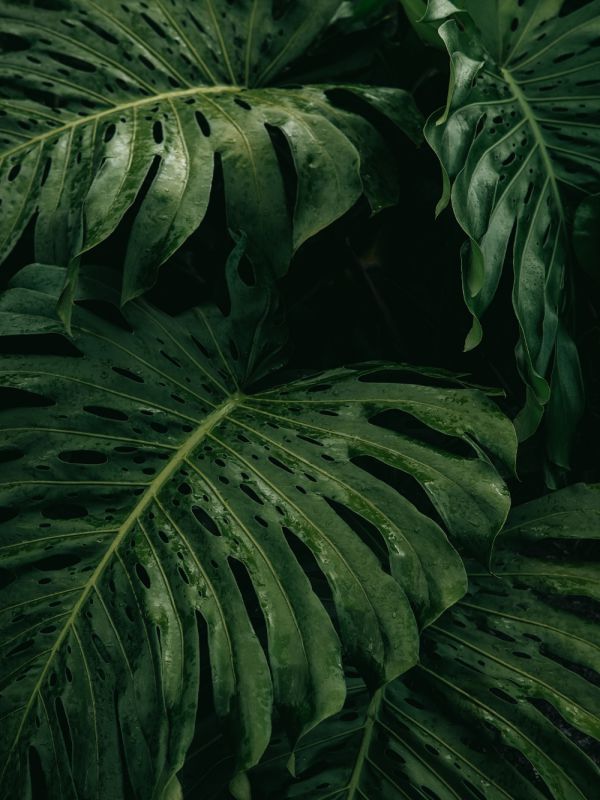
All aroid plants, Monstera included, need micro-, as well as, macronutrients to thrive. Check the label on the back of your fertilizer of choice and ensure that it contains trace minerals and is not just a simple N-P-K fertilizer. NPK fertilizers are those that contain only Nitrogen (N), Phosphorus (P), and Potassium (K).
Using either a liquid or a slow-release fertiliser during the growing seasons can encourage your Monstera to increase its fenestration.
Wondering what’s the best fertilizer for your Monstera or how to fertilize it? Then make sure to read our very detailed Monstera Plant Care Guide.
Your Monstera Might Have Outgrown Its Pot
Do you remember when was the last time you repotted your Monstera? If the answer to this question is some unidentified years ago, then your Monstera might have become root bound (pot bound) and this could be the reason why the leaves aren’t splitting. Alternatively, if you have purchased your plant from the garden store or a nursery, upgrading your Monstera’s nursery’s pot might be beneficial.
So how often do you need to repot your Monstera? Generally, when grown as indoor plants, i.e. houseplants, Monstera need to be repotted every 2 to 3 years. So if you have a feeling that you are way past overdue with it, and it seems like your Monstera has stopped growing or the plant’s leaves aren’t getting larger and aren’t getting more splits, consider replanting your aroid plant.
The Fix: Replant Your Monstera
Replanting your Monstera in the next size pot (or using a pot that is a maximum two sizes bigger) with fresh soil might encourage your plant to grow larger and more fenestrated leaves, i.e. leaves with more splits.
A word of caution: repotting and touching the root ball of any plant stresses them out and should be avoided unless it is necessary, as it might cause more harm than good. Sizing up your Monstera’s pot for cosmetic reasons is probably not the best idea, however, if you suspect that your Monstera is root- or pot-bound then repotting is necessary for the overall health and well-being of your plant.
Are you wondering what are the signs that your Monstera is root-bound? Or how to repot it? Check our step-by-step guide on how to repot houseplants hassle-free.
Lack of Climbing Support
Did you stake your Monstera? No? Then the lack of climbing support could be the reason why your Monstera’s leaves aren’t splitting. A coconut pole, for example, would be much appreciated by your plant, especially if your Monstera is leaning towards one side.
As mentioned above, Monstera plants grows as a semi-epiphyte in their natural habitat. In other words, these tropical plants love climbing and are meant to do so! Mimicking their natural environment by staking them might do wonders to encourage the fenestration, and let’s be honest, Monsteras that don’t have climbing support to guide them while growing can start looking weird at some point.
The Fix: Stake Your Monstera
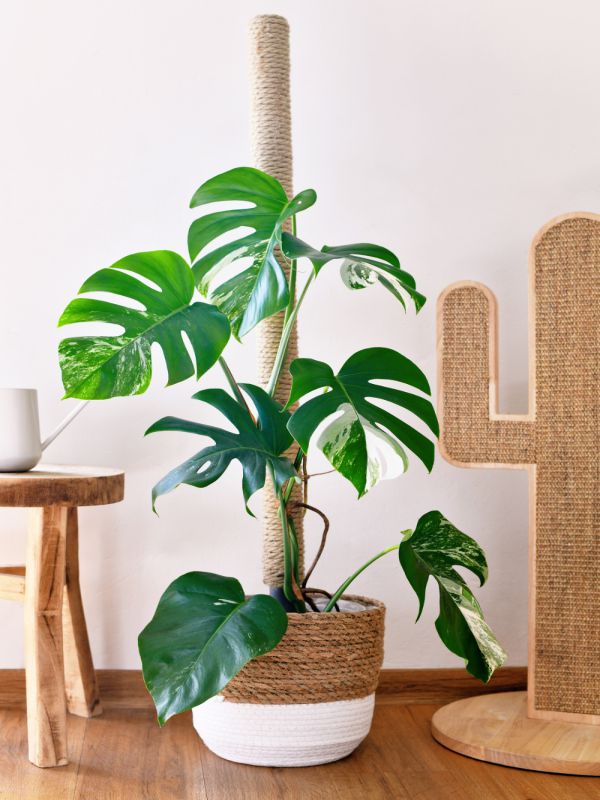
Staking your Monstera can really trigger the plant to produce leaves with more slits (fenestration). If you haven’t already, consider providing your plant with a robust and stable climbing pole (for example, a coconut pole). The best would be if you uproot your plant and insert the climbing support while the root ball is visible, and you can make sure that the roots would not become damaged by the lower part of the pole. In order to fix the plant to the pole, use non-abrasive plant tape. You can fix the stem around the pole and make sure that it is not too tight.
Note: fix the stem to the climbing pole, not the petiole. I have seen some people fixing the petiole to the climbing support, which in turn leads to it breaking and the plant being unnecessarily stressed as a result.
Extra Things to Keep in Mind
Apart from, usually, the main factors that influence the splitting of a Monstera’s leaves, mentioned in this article, there are a couple of additional things to keep in mind.
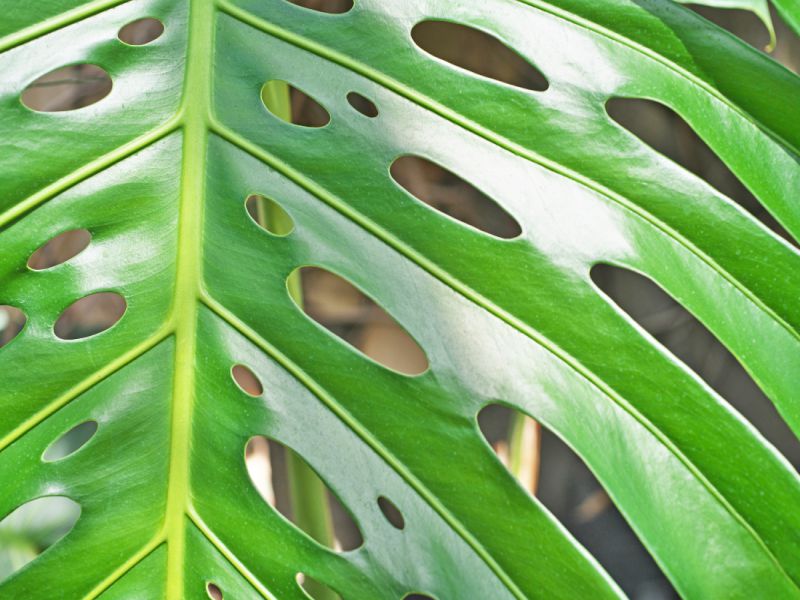
If your Monstera has suddenly just stopped growing and all environmental factors seem to be in check, ensure that your plant is not suffering from a pest problem. Pest infestation on a Monstera can slow down the growth of the plant and yes, can result in the leaves not getting split. Read our article on how to identify and get rid of pests on houseplants if you suspect that little crawlers might be terrorizing your jungle darling.
Are there spots on the leaves of your Monstera, but you are sure it’s not pests? Then it could be bacterial or fungal issues. If your Monstera is sick, the plant will be naturally stressed, which might, once again, lead to stunted growth and a lack of fenestrated leaves. Most fungal and bacterial issues are caused by improper environmental factors around plants. Therefore, if you want to know what are the optimal care conditions for your Monstera grown as an indoor plant, read our complete Monstera Plant Care Guide.
Root and stem rot issues are other problems that you might face with your Monstera, especially when the plant is being overwatered and there is no adequate light source available. Monstera that is suffering from rot-related issues will usually start losing leaves, stop growing, and new growth will most likely have fewer slits. If you suspect that your Monstera might have been overwatered, check out our detailed guide on how to recognize and treat rot in plants right away, as most of these issues need to be addressed timely to ensure that a plant doesn’t succumb to them.
Did you just cut your Monstera either to control its growth or to propagate it? This could be another factor to consider as to why your Monstera’s leaves might not be readily splitting, in which case: just be patient and wait. Eventually, as the mother plant gets over the stress of being cut, it should start producing larger leaves that have their distinguished fenestration.
Monstera Fenestration: Final Thoughts
Monstera are found in their natural habitat growing and climbing on trees, in an attempt to reach heights and receve more light. The leaves of these plants are characterized by their deep splits and holes that form when they grow larger. Their general resilience as well as large lush-green leaves and their fenestration are unique features that make Monstera varieties such popular and sought-after houseplants.
If you have a Monstera at home, you probably bought it exactly because of its unique physical characteristics that distinguish these plants from many others: the fenestration, i.e. the holes and the splitting of the leaves. But if your Monstera is refusing to produce fenestrated leaves or suddenly is going backwards, i.e. producing leaves with less fenestration (less splits), it can be a big bummer, I know. Luckily, however, there are different things that you can do to increase the fenestration of your Monstera as discussed in this article.
If encouraging your Monstera to produce more fenestrated leaves is your priority, make sure to stay on top of your Monstera’s needs and provide it with plenty of bright indirect light. Additionally to increase your Monstera’s split leaves, keep it in a stable environment and ensure that your plant is receiving enough water and nutrients.
As mentioned, the fenestration of a Monstera depends on the age of the plant, so sometimes you just have to wait for your tropical plant to mature enough, i.e. the fenestration waiting game. Just be a bit patient with your Monstera. As soon as your plant’s needs are met, it will reward you with new growth that is more and more fenestrated with each leaf and will soon turn into a stunning (and large!) member of your plant family.

